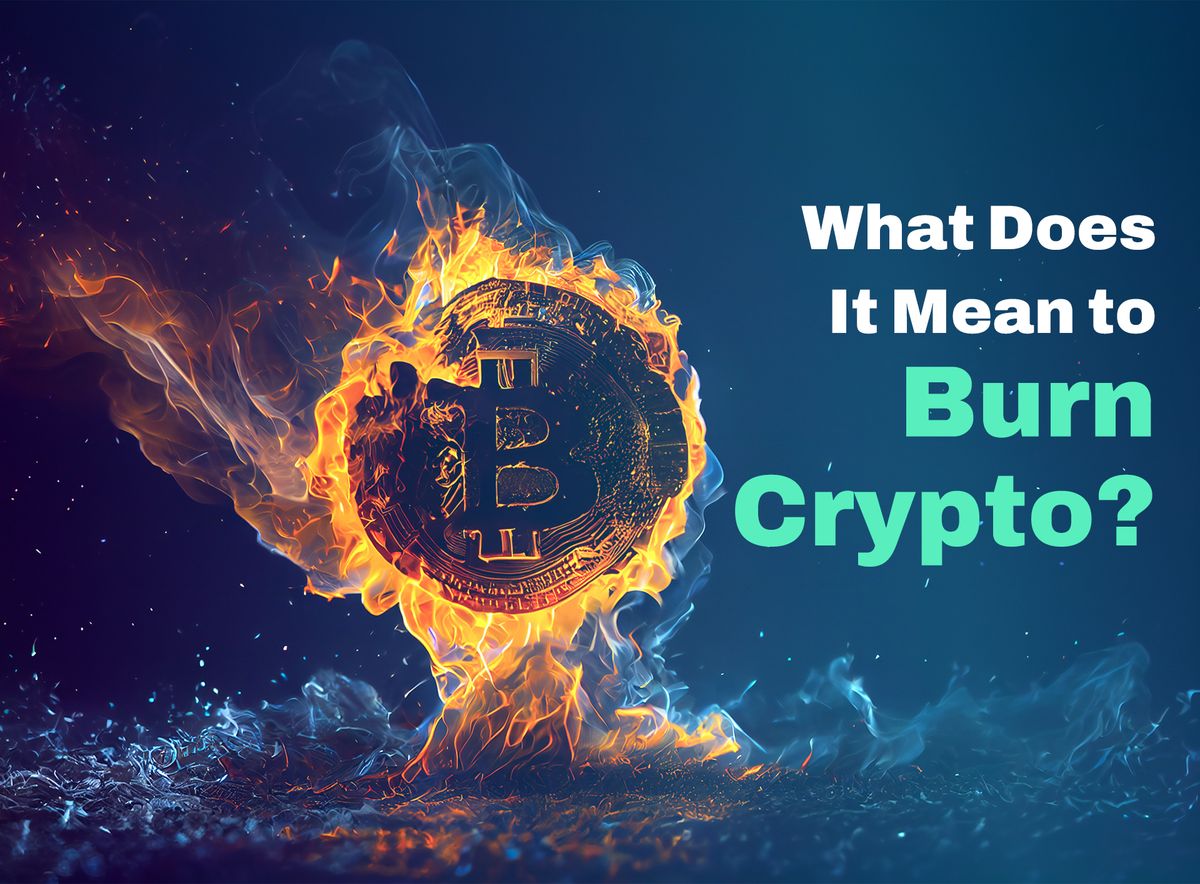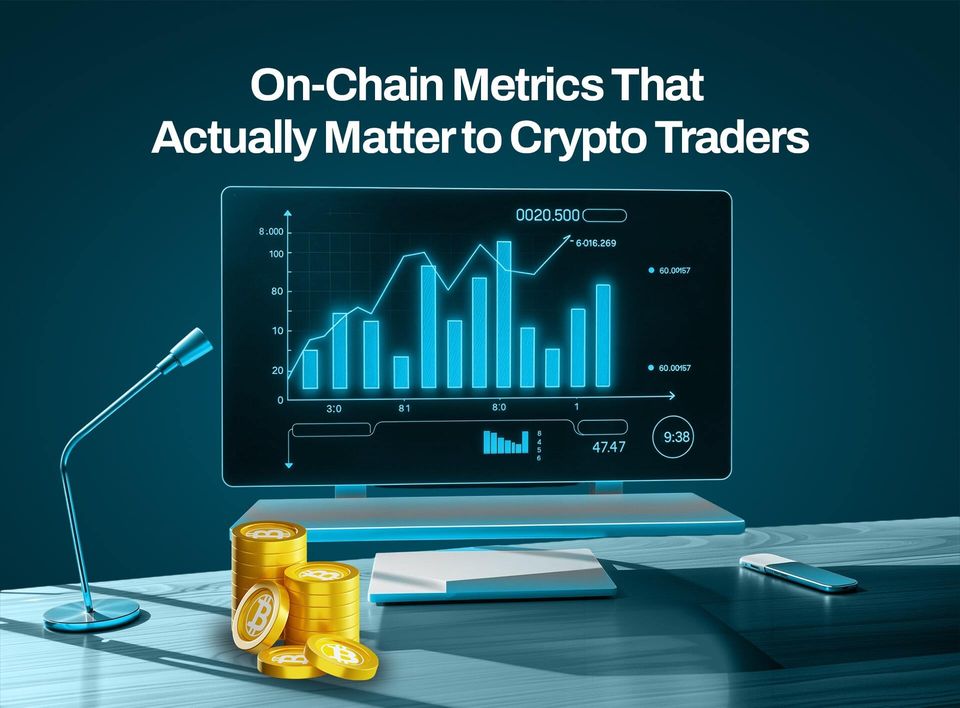What Does It Mean to Burn Crypto?
Crypto burning reduces a coin’s supply to increase scarcity and value. Learn why projects do it, and its impact on the market.

Burning crypto became popular in 2017, and since then, there's always been news about every other month that millions, billions, or even trillions of tokens are burned.
In this article, you'll learn what cryptocurrency burning is and its potential benefits.
What Is Cryptocurrency Coin Burning?
Cryptocurrency burning refers to permanently removing a certain amount of tokens or coins from circulation by sending them to a specific wallet address that cannot be accessed or used for transactions. This reduces the total supply of the cryptocurrency, effectively "burning" or making the tokens unusable.
To understand this concept better, think of a cryptocurrency wallet as a digital equivalent of a bank account.
When you receive or send cryptocurrency, the transaction occurs between addresses. Just like you have an email address to send and receive emails, you have a unique cryptocurrency address associated with your wallet where you can send and receive coins.
However, burner or eater addresses are special wallet addresses created without a private key. A private key is a unique code that allows access to the coins in a wallet.
Since burner addresses lack a private key, any coins sent to them become permanently locked or inaccessible. These addresses are often referred to as "burner" or "eater" addresses because the coins sent to them effectively disappear from circulation, similar to burning something physically.
How Did Coin Burning Start?
The concept of coin burning can be traced to buybacks in traditional finance.
In a stock buyback, a company repurchases its own shares from the market, reducing the number of shares available to investors. Similarly, coin burning achieves a reduction in token supply, which can have a positive impact on the cryptocurrency's value.
Coin burning became more prevalent in the cryptocurrency ecosystem in 2017 and 2018 when several coins, such as Binance Coin (BNB), Bitcoin Cash (BCH), and Stellar (XLM), burned tokens to decrease supply and potentially increase prices.
More recently, newer cryptocurrencies with large initial token supplies have adopted coin burning as a strategy.
One of the reasons behind the rising popularity of coin burning is that it allows cryptocurrencies to start with a large supply of tokens at a low initial price. This can attract investors who are enticed by the affordability.
However, developers can burn some tokens as the cryptocurrency gains traction and demand grows. This reduction in supply can drive up the price of the remaining tokens, potentially benefiting early investors.
What Cryptocurrencies Can Be Burned?
Every cryptocurrency can be burned.
n essence, any cryptocurrency can be sent to a designated "burn address," which effectively removes those tokens from circulation permanently.
Let's look at a few examples of notable cryptocurrency burn events:
1. Binance Coin (BNB): Binance, a prominent cryptocurrency exchange, has been conducting quarterly burns of its BNB tokens since 2017. The aim is to progressively remove 50% of the total BNB supply from circulation. In July 2023, they burned approximately 1.99 million BNB tokens, equivalent to around $480 million. To date, they have burned a significant number of tokens, valued at an impressive $44 billion based on today's price.
2. Stellar (XLM): In 2019, the Stellar Development Foundation burned a significant portion of the Stellar token supply; 55 billion XLM tokens were permanently removed from circulation—this burning aimed to reduce supply and positively impact the value of the remaining tokens.
3. Shiba Inu (SHIB): The developers of Shiba Inu made headlines in 2021 when they decided to give half of the total supply to Vitalik Buterin, the co-founder of Ethereum. In response, Buterin burned 90% of the tokens received and donated the remaining amount. Additionally, it's worth mentioning that over $3 billion worth of Shiba Inu (SHIB) tokens have recently been burned.
What Is Proof of Burn?
The blockchain works like a digital record of all transactions, like a digital version of a bank statement everyone can access.
Now, to ensure everyone agrees on what's in this record, the blockchain uses a "consensus mechanism." This is like a set of rules that help different computers on the network agree on the same information in the record.
One of these consensus mechanisms is called "Proof-of-Burn" (PoB). In simple words, PoB is a way to ensure the information in the blockchain is accurate and valid.
Here's how it works:
- People who want to participate in this blockchain network have to "burn" or destroy some of their digital tokens or coins. Burning means they make those tokens unusable or unspendable.
- Once they've burned their tokens, they become validators. Validators are like referees who check if the transactions in the ledger are correct.
- Validators use their computers to verify transactions and make sure they're legitimate. They do this because they have a stake in the network – they've burned their tokens, so they want to ensure everything works properly.
- If enough validators agree that a transaction is valid, it gets added to the blockchain.
PoB is often referred to as a proof-of-work system without energy waste.
The process of burning coins does not require significant resources apart from the energy used to mine the coins before the burning process.
This approach enables the network to remain active and efficient.
In return for burning tokens, miners receive rewards in the form of the native currency of the blockchain to which they are contributing.
What Is the Benefit of Cryptocurrency Coin Burning?
Here are three potential benefits of coin burning:
1. Increase in Cryptocurrency Value: One of the potential benefits of coin burning is that it can help a cryptocurrency rise in value. While this isn't guaranteed and depends on various factors, some cryptocurrencies have experienced positive price movements following token burns. By permanently removing tokens from circulation, the reduced supply may create a perception of scarcity, potentially driving up demand and increasing the value of the remaining tokens.
2. Curbing Inflation: If a cryptocurrency has a high inflation rate, burning tokens can help control or curb the rate of increase. When new tokens are continuously minted or created, it can lead to an oversupply, potentially diluting the value of existing tokens. Burning tokens reduces the overall token supply, balancing the inflation rate and potentially maintaining or even increasing the value of the remaining tokens.
3. Adding Blocks to a Blockchain: In the context of cryptocurrencies that implement proof-of-burn consensus mechanisms, token burning allows participants to add new blocks of transactions to the blockchain. By burning a specific amount of tokens, participants earn the right to mine new blocks. This mechanism helps ensure the active and agile functioning of the blockchain network.
To Recap
- Burning crypto refers to permanently removing a certain number of tokens from circulation.
- The motivation behind coin burning is often to increase the value of the remaining tokens.
- The basic economic principle of supply and demand drives this phenomenon.
- When the circulating supply of a cryptocurrency decreases, the assets can become more scarce, resulting in a potential rise in price.
Disclaimer: This article was written to provide guidance and understanding. It is not an exhaustive article and should not be taken as financial advice. Obiex will not be held liable for your investment decisions.



